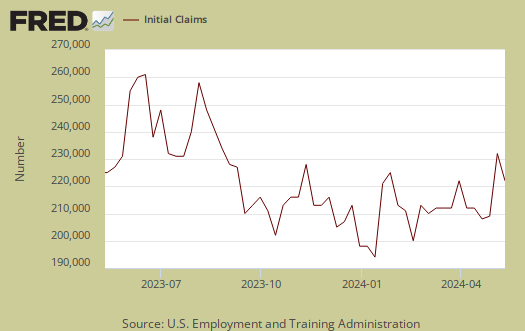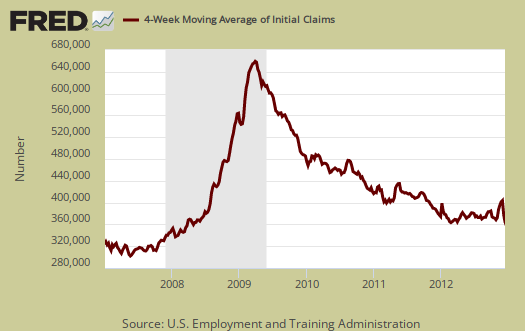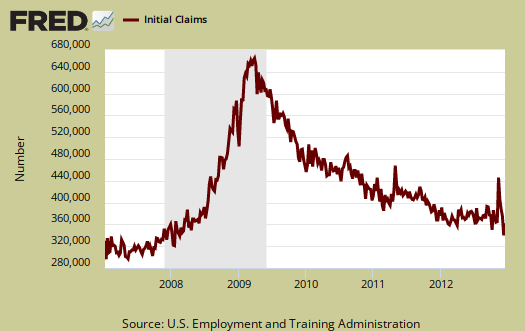The DOL reported Initial weekly unemployment claims for the week ending on December 15th, 2012 were 361,000, a 17,000 increase from the previous week of 344,000. Superstorm Sandy's devastating effects should be normalizing out by now, so this is a troubling increase in initial unemployment filings.

There were 2,096,545 persons claiming EUC (Emergency Unemployment Compensation) benefits for the week ending December 1st. Beyond the fiscal cliff insanity, these people are due to run out of benefits after December 29th. The National Employment Law Project predicts over 3 million people will run out of unemployment benefits by the end of Q1 2013. Extending emergency unemployment benefits so far has not been a major piece of the fiscal cliff so called grand bargain. Cutting social security and other social safety nets are part of the Congressional fiscal cliff deal. This means millions will be further thrown into poverty on December 29th. This is an economic doomsday scenario, yet is not receiving much of a mention by Congress.
USA today reports the costs for one year to extend unemployment benefits is $30 billion. Over 40% of the unemployed have been so 27 weeks or longer.
Each dollar the government pays out in jobless benefits yields $1.42 in economic output because the unemployed tend to spend virtually all their payments, and it has a substantive positive effect on the economy. says Mark Zandi, chief economist of Moody's Analytics.
The four week moving average decreased 13,750 to 367,750 as Sandy's effects dissipate. In the below graph we can see we still are not at pre-recession initial weekly unemployment claims levels. If anyone recalls, even before the Great Recession the job market was not so hot. Below is the four week moving average, set to a log scale, from January 1st, 2007.

Below is the mathematical logarithm of initial weekly unemployment claims. A log helps remove some statistical noise, it's kind of an averaging and gives a better sense of a pattern. As we can see, we have a step rise during the height of the recession, but then a leveling, then a very slow decline, or fat tail. That fat tail is our never ending labor market, stuck in the mud, malignant malaise. The spike in November is superstorm Sandy's effects.

Continuing unemployment claims didn't budge, and we have large long term unemployed, who are about to be cut off from benefits. The below figure doesn't include those receiving extended and emergency unemployment benefits.
The advance seasonally adjusted insured unemployment rate was 2.5 percent for the week ending December 8, unchanged from the prior week's unrevised rate. The advance number for seasonally adjusted insured unemployment during the week ending December 8 was 3,225,000, an increase of 12,000 from the preceding week's revised level of 3,213,000. The 4-week moving average was 3,240,500, a decrease of 33,500 from the preceding week's revised average of 3,274,000.
In the week ending December 1st, not seasonally adjusted, the official number of people obtaining some sort of unemployment insurance benefit was 5,402,429 with 2,096,545 people receiving EUC, which is scheduled to run out in January 2013. That's 38.8% of all those receiving unemployment benefits about to be cut off, not seasonally adjusted.
There were 12 million unemployed in November.

Recent comments